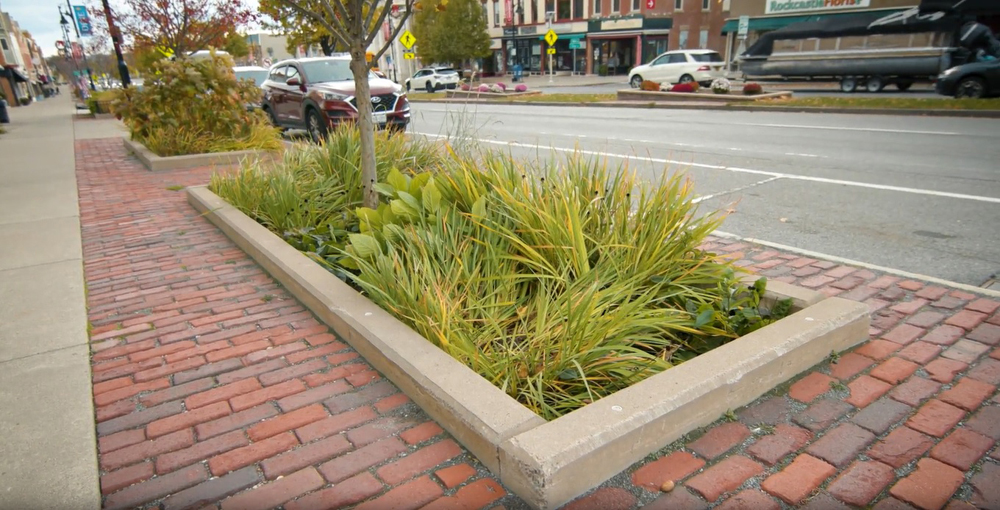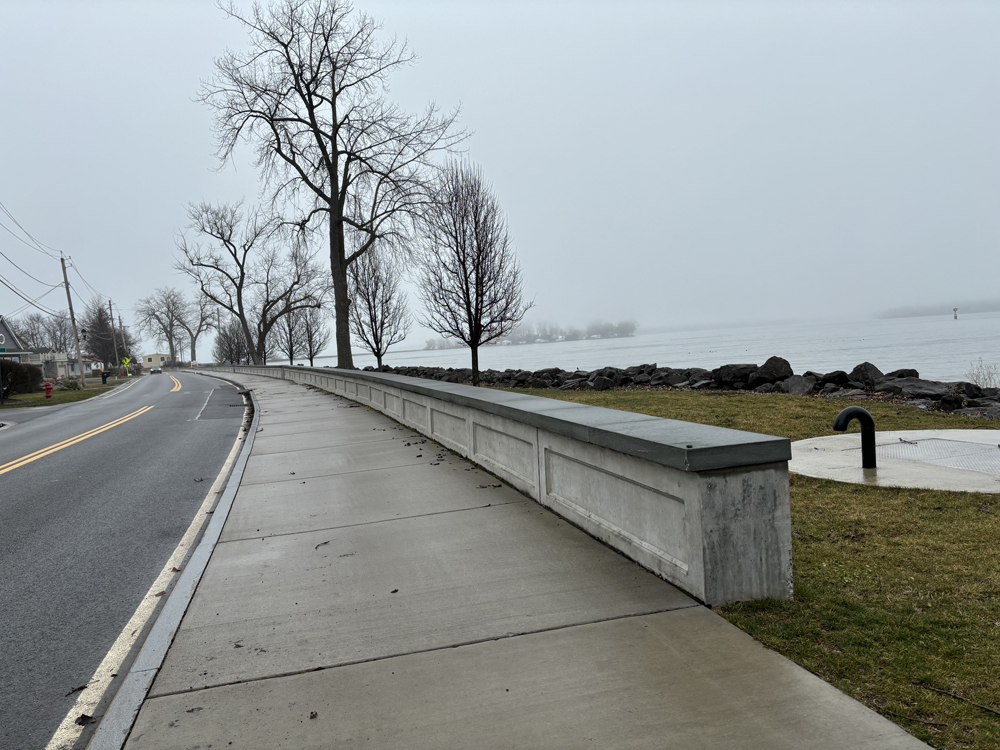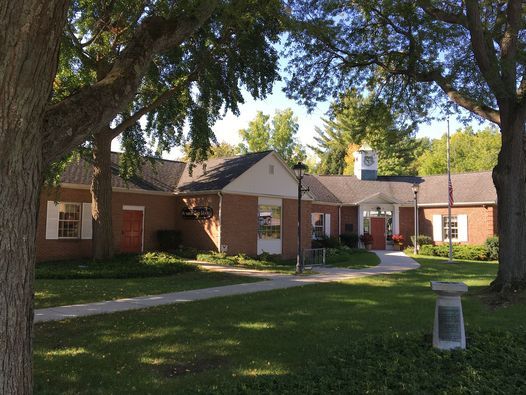Upstate communities share resilience success stories in NY Sea Grant video case studies

New York Sea Grant has announced a “Great Lakes Resilience Case Studies” video series featuring successful green infrastructure and flood resilience projects in three upstate communities. The videos highlight approaches and design elements applied in Canandaigua, Geneva, and Sodus Point that other communities statewide can use to protect water quality, reduce the impact of flooding, and enhance shoreline integrity. The videos are posted at www.nyseagrant.org/GLResilienceVideos2024.
Sodus Point is the village with the lowest elevation along Lake Ontario’s southern shoreline. Following the high-water event in 2017, the Village of Sodus Point enlisted New York Sea Grant to facilitate a public engagement process that empowered local officials to identify ways to protect the village from future flooding. In the “Sodus Point’s Flood Resilience: A Case Study in Community Strength” video, Sodus Point Mayor Dave McDowell, resident Laurie Hayden, and Sarah Costich of Costich Engineering, Land Surveying & Landscape Architecture share how installing green infrastructure elements, a larger storm sewer system, flood wall, and sand dune have benefited the village.
The “Protecting Our Water Resources: A Case Study in Green Infrastructure” video illustrates a sampling of green infrastructure (GI) practices and how they can be used to mitigate problematic stormwater. The short video showcases GI practices, such as bioswales, green streetscaping, rain gardens, and porous pavement, applied in the cities of Canandaigua and Geneva to retain and filter stormwater during heavy rain events to reduce nuisance flooding. Porous pavement at Finger Lakes Community College (FLCC) has reduced water pooling in previously soggy areas near the CMAC Performing Arts Center on campus. In the video, FLCC Director of Facilities and Grounds Catherine Ahern, Canandaigua City Manager John Goodwin, and Barton and Loguidice Senior Managing Community Planner Jayme Breschard encourage other communities to explore green infrastructure as a feasible component to stormwater management.
“These video case studies demonstrate how communities have addressed local needs and taken action to improve their resilience to flooding. New York Sea Grant is pleased to be able to create these videos to showcase the work of local communities, and to provide them as a resource to other communities as they start their own journeys toward improved flood resilience,” said New York Sea Grant Coastal Community Development Specialist Mary Austerman.
Funding for the case study videos development was provided through the National Sea Grant College Program of the U.S. Department of Commerce’s National Oceanic and Atmospheric Administration to the Research Foundation of the State University of New York and through the Federal Emergency Management Agency of the U.S. Department of Homeland Security to Cornell University on behalf of New York Sea Grant.
New York Sea Grant is a cooperative program of Cornell University and the State University of New York. Learn more about New York Sea Grant’s Coastal Community Development and Coastal Processes and Hazards programming at http://www.nyseagrant.org/ccd and http://www.nyseagrant.org/glcoastal.
Provided information




